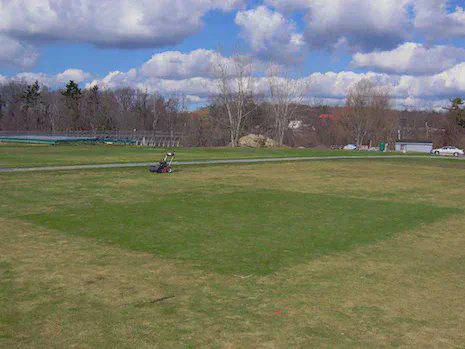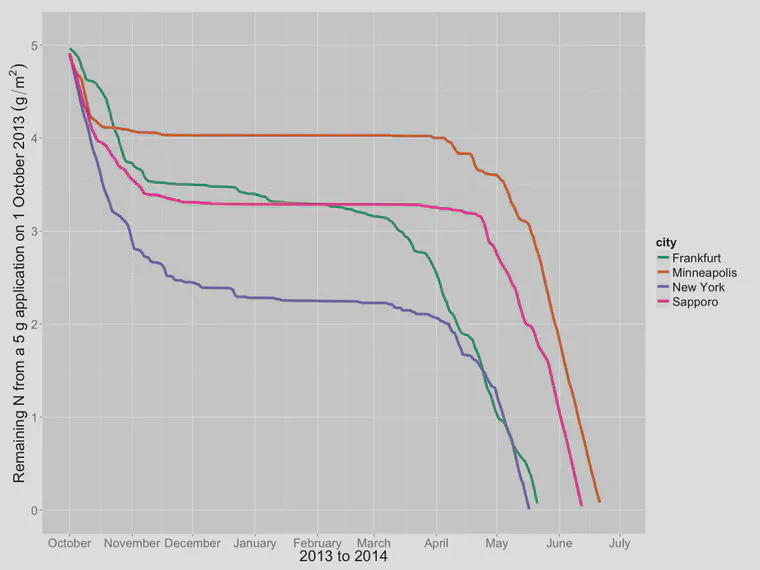On fertilizer, and whether it should change by season
When it comes to fertilizer, it makes sense to me to apply nutrients to the turf as they are required. This is based on the growth potential approach developed by PACE Turf, and is very similar to the demand driven fertilization described by STERF.
As autumn approaches, I am reminded that some turfgrass managers make an application of nitrogen fertilizer in a substantially larger amount than the grass can use, sometime in autumn when the grass growth has slowed appreciably, but before the grass goes dormant. That this application has some effect on turfgrass growth the following spring, I have no doubt. That is to be expected. Adding nitrogen to turf at any time of the year will result in increased color and growth at some point in the future.

One can get early spring green up and improved turf performance in spring simply by fertilizing normally and continuing the fertilizer throughout the year according to a growth potential or demand driven approach. From the STERF handbook:
There is no evidence to suggest that the relationship between the different nutrients in turfgrasses needs to be altered with season, as long as the grass is in its vegetative phase. There is therefore no biological reason for altering the composition of the fertiliser product used during the year. When a fertiliser with the proportions shown in Table 2, column A, is applied in growth-restricting amounts, the grass will always experience the situation primarily as nitrogen-restricted. Other elements, for example potassium, will then be taken up in ‘luxury’ amounts, i.e. in amounts exceeding the requirements for growth. Adding extra potassium in late summer/autumn to turf which already contains a surplus of this compound therefore has no additional effect on the ability of the grass to survive low temperatures. Addition of extra phosphorus in the spring when the soil temperature is low is also superfluous when a well-balanced fertiliser is supplied in small, frequent doses. As discussed, a moderate lack of nitrogen poses no serious problems for the health of turfgrass and in fact actually increases the quality of the turf. It is deficiency of elements such as potassium, magnesium, iron and manganese, i.e. elements intimately involved in photosynthesis, which must be avoided at all costs. This is most easily achieved by using a complete, well-balanced fertiliser compound on all fertilisation occasions during the season.
The question I have is what benefit do we get for the turf by applying a relatively large amount of N when the grass has pretty much stopped growing? Wouldn’t we get the same result, with less risk of N loss, probably a better N use efficiency, and probably increased duration of green color in autumn, by applying the N earlier, in a way that matches growth potential or plant demand?
Research by Lloyd et al. and by Bauer et al. reaches a similar conclusion..
I wrote about that as spring reflections on autumn impressions, and I’ve made some charts to illustrate just how long the N applied in a relatively large dose on 1 October may last.
